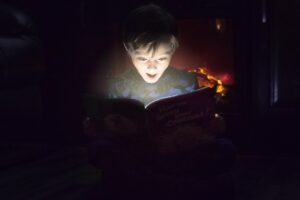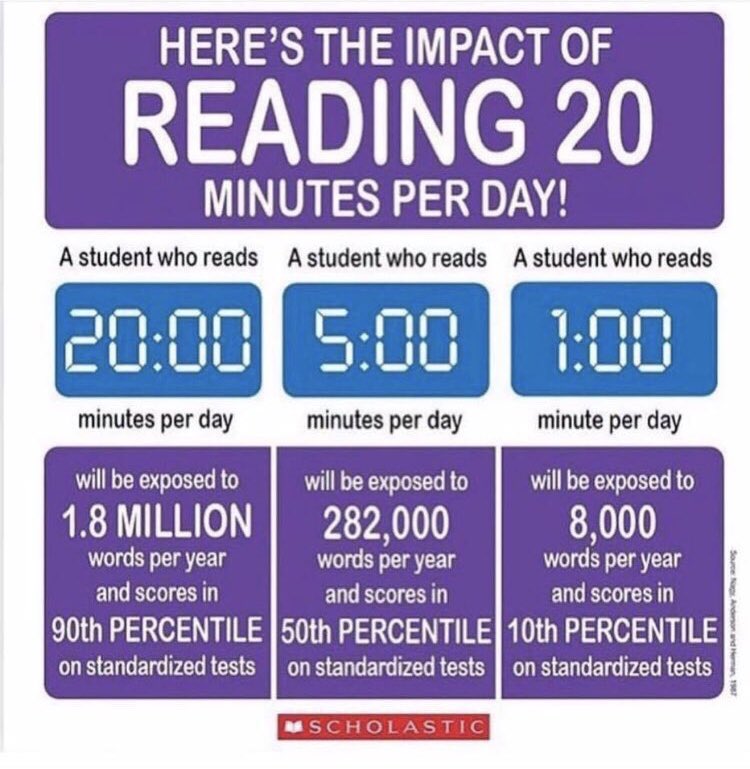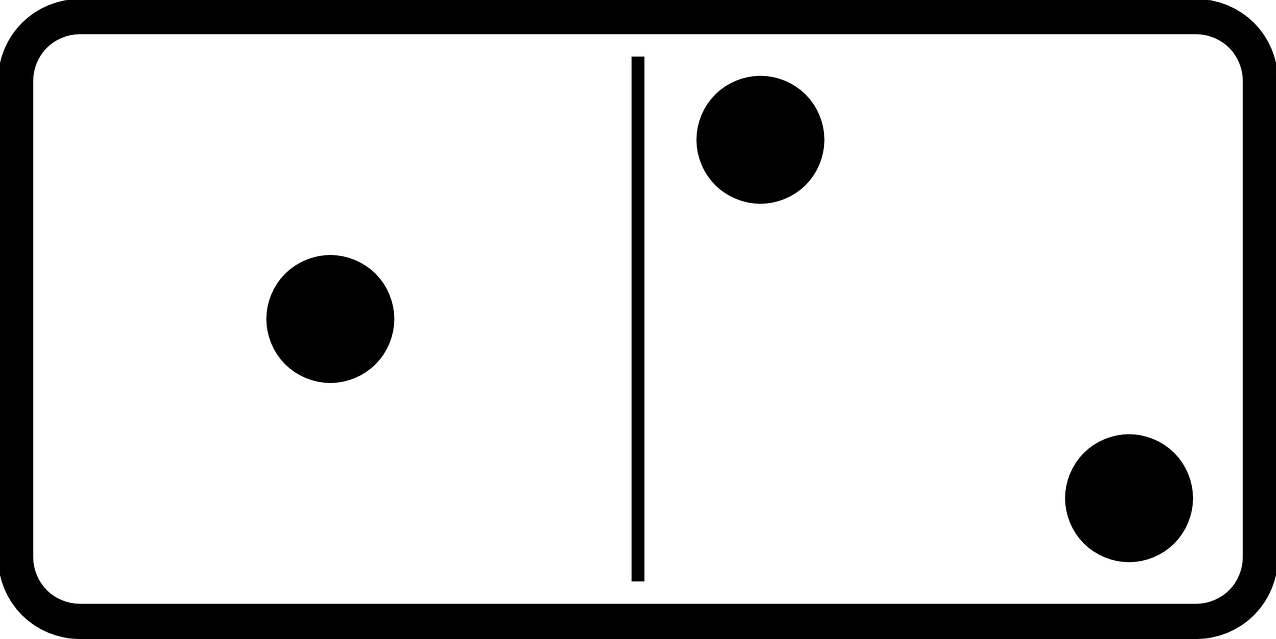Thoughts For Parents
Now, I want to start this post by saying that I am not a parent myself. Although, it often feels like I am a parent to 19 kids. However, there have been many times that parents have approached me and asked me what my thoughts were about how to get their kid to engage in reading at home.

Step 1: Interest In The Book
Often times parents think that their kids need to read a certain type of book or that they will want to read the books that you read as a child. This is neither right nor wrong. Reading honestly comes down to strategies and personal preference. As a child, my mum read to me every night and to her dismay I was never an avid reader. I had a very hard time focusing and I just couldn’t seem to get into any books. When I was in school I was equally as distracted. Now, this isn’t to say that I never got into reading but I am a type of person who can only read a book when there is nothing else going on. Some of your kids are going to be like this and that is absolutely okay. What can help though, is reading along side them or reading shorter books to give them quick interest. Many kids who struggle with distractions actually do a lot better when there are illustrations. Sometimes what the kids are struggling with is really their inability to visualize. So, the most important part of reading, for kids, especially when they’re at home is having them read something they’re interested in. This doesn’t have to come in the form of novels, it certainly can, but it doesn’t have to. When reading at home, the students job is to simply practice and continually be exposed to words. Plain and simple.

Step Two: Routines
Daily scheduled reading time is a MUST. Similar to when kids are in school, if your child knows that the daily routine is to brush teeth, get ready for bed and then sit and read with either you or on their own then hopefully, it’s not as big of a push back. This goes back to my personal belief of negotiables and non-negotiables. Now if your child is struggling with reading then making this time the quality time you spend together is imperative. Students who struggle with reading will often avoid it because it’s really hard for them. When something is really hard for kids, they’re amazing in finding ways around it. Unfortunately, as kids go through school reading is an essential part. Almost every subject as kids progress through their schooling will rely on reading. This isn’t to say that if a kid is struggling as a reader that they won’t succeed. However, bare in mind that there’s a chance it will just be that much harder.

Step Three: Support
This is for the parents who need to support their child at home and have absolutely no idea what to do. Please do not be ashamed of this because honestly teaching reading is not as straight forward as one might think. However, as a parent, there are 3 simple strategies that I recommend to the parents of my students. Reading at home can look a lot different depending on your child’s teacher and whether they have set up home reading for you. If they have, fabulous, you’re job just got simpler. If your child’s teacher is sending home books with them then these are generally the books that you are going to want to read with them first. You can even them, whether they want to read them on their own first and then with you. There’s lots of options here. However, when a child is learning to read or struggling to read it is imperative that they have someone beside them to help them through. Sometimes this roll is more for reassurance than anything. Kids who struggle with reading often have very low self-esteem when reading so by having a support system with them it generally makes things easier if you know what strategies to use.

Here are the three that I recommend to parents:
Tales From Outside the Classroom provides a great breakdown and some posters to help understand these strategies. The strategies can be found here: https://www.talesfromoutsidetheclassroom.com/2012/09/self-monitoring.html
How To Use These Strategies:
Let me take you through a simple version of how a parent would use these strategies when reading with their child. Please keep in mind that the golden rule for picking books that are at an appropriate level is that the child should know all but 5 words on each page. The following scenario is for when you are reading a book that fits into this rule.

Scenario 1:
Child is reading a book. They start reading, the parent is listening and looking at the book with them. The child reads the following sentence “The lion is happy.” However, instead of saying happy, the child has said excited. You would then refer to the list. (This does take some practice). When a child replaces a word like this you would ask them “Does that look right?” Then you can repeat the word for them “does that look like excited?” This is cuing the child to look at the way the word is actually spelt. If they say no, then praise them by saying “you’re right!” then you can ask “what does this word start with? and repeat the sound for h”.
If the child says yes. Then you can ask “what letter does this word start with? Then point out that excited starts with a different letter.” Hopefully they recognize that these words, although the same meaning, are not the same word when spelt. If the child, after this prompting doesn’t know what the word is then you simply tell them. Then you reread the sentence. We don’t want to just give kids the words because we want them to learn how to correct themselves and recognize words on their own. In case you’re wondering, the reasons we didn’t use the other two strategies of does it sound right? does it make sense? is because your child has used their prior knowledge to insert a word into the context of the sentence. So by them saying excited instead of happy, they are actually achieving the other two strategies.

Scenario 2:
Child is reading a book. They start reading, the parent is listening and looking at the book with them. The child reads the following sentence “The lion is walking in the grass.” However, instead of saying walking, the child has said water. You would then ask them, “does that sound right? (and repeat what they said) the lion is water in the grass?” Most likely, the child will then say no, that is does not make sense. So we ask them “what does make sense here, the lion is ____in the grass” and see if they can guess based on the context or on the beginning letter of the word what the word might be. This scenario is exactly why we don’t ask kids to always just sound it out because walking is not a word that would be easy to sound out. This is also another place that you could say to the child after they’ve read it incorrectly to look at the picture. Again, this is why struggling readers like pictures, because it gives them clues to the story without relying solely on the words.

Scenario 3:
Child is reading a book. They start reading, the parent is listening and looking at the book with them. The child reads the following sentence “The lion is walking in the grass towards his friends.” However, instead of saying friends, the child has said fire. You then ask the child “does that make sense? and repeat what the child said the lion is walking in the grass towards his fire”. We always want to repeat what the child said because sometimes they are just guessing and don’t remember what they said. After you’ve asked whether it makes sense. They may say no, and you can then proceed to ask them what the word looks like and what would make sense. Again, you can prompt them towards the picture or if the word is more common or simple you could attempt to sound the word out. If the child says, yes that made sense then you just correct them by saying no, a lion wouldn’t walk towards his fire that doesn’t make sense. Let’s try again and see what would make sense.

Praise:
Children who are learning to read and those who are struggling to read need praise. But good job isn’t specific enough. Saying things like “good job at using the does it make sense strategy” or “hey, you figured that word out all by yourself tell me how you did it” are praises that will provide more feedback to the child. We are not praising them for being better at reading, we’re praising them for finding their mistakes and correcting them because that’s what good readers do. It is not something that they should be ashamed of because mistakes are natural and they’re okay. We just go back and fix it.